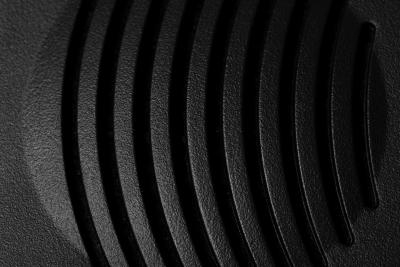
A subwoofer reproduces lower bass frequencies that smaller speakers cannot. Subwoofers are manufactured with either a single voice coil or dual voice coils. Regardless of the type, a subwoofer requires an amplifier to deliver the power necessary for the speaker to function properly. Single voice coil subwoofers have one set of connection terminals for wiring, while dual voice coil subwoofers have two sets of terminals -- one set for each voice coil. Both single voice coil and dual voice coil subwoofers can be wired in different configurations and, as a rule of thumb, should be wired to match the impedance of the amplifier it will be connected to. While there are many possible wiring configurations, some are more common than others.
Wiring a single voice coil subwoofer to a mono-channel amplifier is the least complicated wiring configuration, regardless of whether the subwoofer is rated 2-ohm, 4-ohm or 8-ohm. The positive terminal on the subwoofer is connected to the positive output terminal on the amplifier and the subwoofer's negative terminal is connected to the amplifier's negative output terminal. With this wiring configuration the ohm load will match the ohm rating of the subwoofer.
In wiring a 2-ohm dual voice coil subwoofer at a 4-ohm load, one of the two positive terminals and one of the two negative terminals on the subwoofer is connected to the corresponding output terminals on a mono-channel amplifier. The remaining positive and negative terminals must be connected.
When wiring a 4-ohm subwoofer to a 2-ohm mono-channel amplifier, the two positive terminals on the subwoofers are connected while the two negative terminals on the subwoofer are connected. The subwoofer is connected to the amplifier by wiring either one of the positive terminals and either one of the negative terminals to the corresponding output terminals on a mono-channel amplifier.
Although a multi-channel amplifier is designed to power multiple speakers, a multi-channel amplifier can be connected to a single subwoofer by "bridging" the amplifier. Bridging an amplifier reduces the number of channels an amplifier has by half and doubles the power output. For example, a two-channel amplifier that produces 50 watts of power per channel would produce 100 watts of power when bridged to a single channel. Bridging an amplifier is simply the product of the way the subwoofer is connected to the amplifier. Consult the amplifier's owner's manual to determine how to bridge your amplifier and the resulting ohm rating. The wiring for a multi-channel amplifier is the same as described earlier.